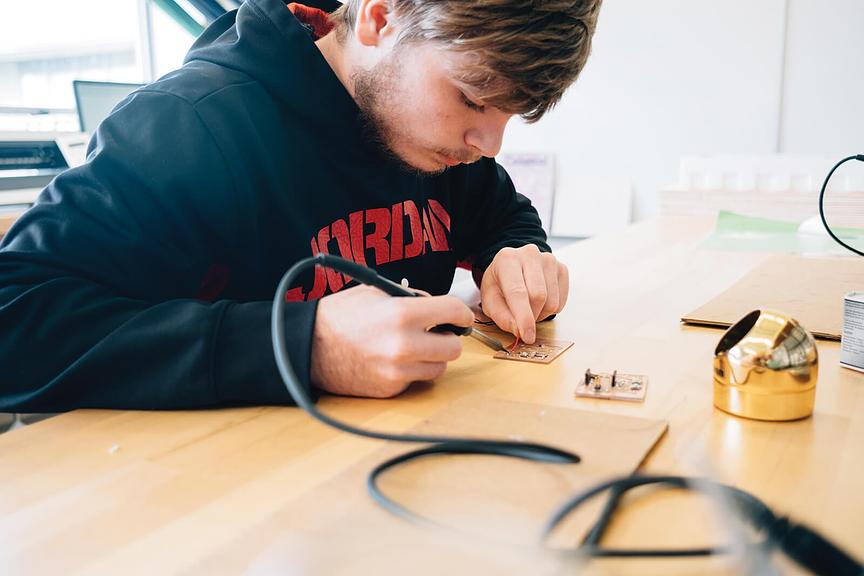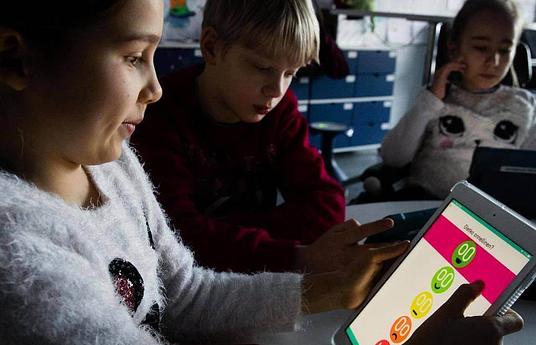Learning is defined as the acquisition of knowledge or skills through experience, but what is not defined is that everyone learns in their own unique way. For students diagnosed with mental health needs this is especially true, and often times it is the small changes or opportunities that can have a positive impact on their learning experience.
Through the introduction of digital fabrication to students with mental health needs in our campus school, IU1 has seen amazing results. Student disruptions have decreased, creativity and engagement has increased, collaboration and social skills have improved, and participation in active group therapy has increased. These results are not only within the lab setting but have begun to transfer over into the classroom as well. Learning through digital fabrication not only works for students with mental health needs, but provides an innovative approach to facilitating learning for these students, as it reduces behavioral issues and gives students an environment where they can thrive academically.
Intermediate Unit 1 (IU1) serves 25 school districts in Southwestern Pennsylvania (USA) and operates four campus schools for students with alternative or special education needs. Recognizing the need for a more innovative approach in learning, IU1 installed a digital fabrication lab, or Fab Lab, at one of the alternative and special education campuses serving students in K-12. The IU1 Fab Lab is a technical platform for science, technology, engineering, and mathematics (STEM) education, workforce development, and business idea prototyping. Students have the opportunity to explore the entire engineering design process in authentic and real world contexts through tools that enable them to go from concept to drawing, models to prototype, and redesign to final product.
The main goal of the lab is to provide an opportunity for students who learn in a different manner with a student-centered collaborative learning environment. Inside of the Fab Lab you can find maker materials of all sorts, from pipe cleaners to vinyl cutters, markers to laser cutters, screen printing to CNC machines, and much more. Students in special education, alternative, and therapeutic emotional support (students with mental health diagnoses) attend classes daily in the Fab Lab, working with the Fab Lab Teacher, social workers, and therapists to create unique and custom projects. It did not take long before IU1 realized just how big of an impact digital fabrication would have on the students we serve.
IU1 students can suffer from many mental health conditions ranging from ADHD, mood disorders, bipolar, autism, anxiety, OCD, schizophrenia, and PTSD. Many may think, how can you let these students around tools that may cause harm or could be damaged? However, within the Fab Lab you would never know they have mental health needs. The IU1 Fab Lab provides these students with a hands-on collaborative and educational setting, where they can develop social skills, express their creativity, and engage in a meaningful manner. All social workers and therapists have been trained on the tools and equipment and group therapy is provided within this classroom setting.
Everyone learns differently, and the IU1 Fab Lab provides an opportunity to students to focus on their own mental wellness in an innovative approach to hands-on, personalized learning. Students are able to grow and succeed in their endeavors within the classroom environment, using the skills and knowledge they have gained through their experiences in the Fab Lab to effectively and successfully support their mental health needs.
The IU1 Fab Lab was created through a partnership with the Claude Worthington Benedum Foundation, Chevron, and the Fab Foundation.


